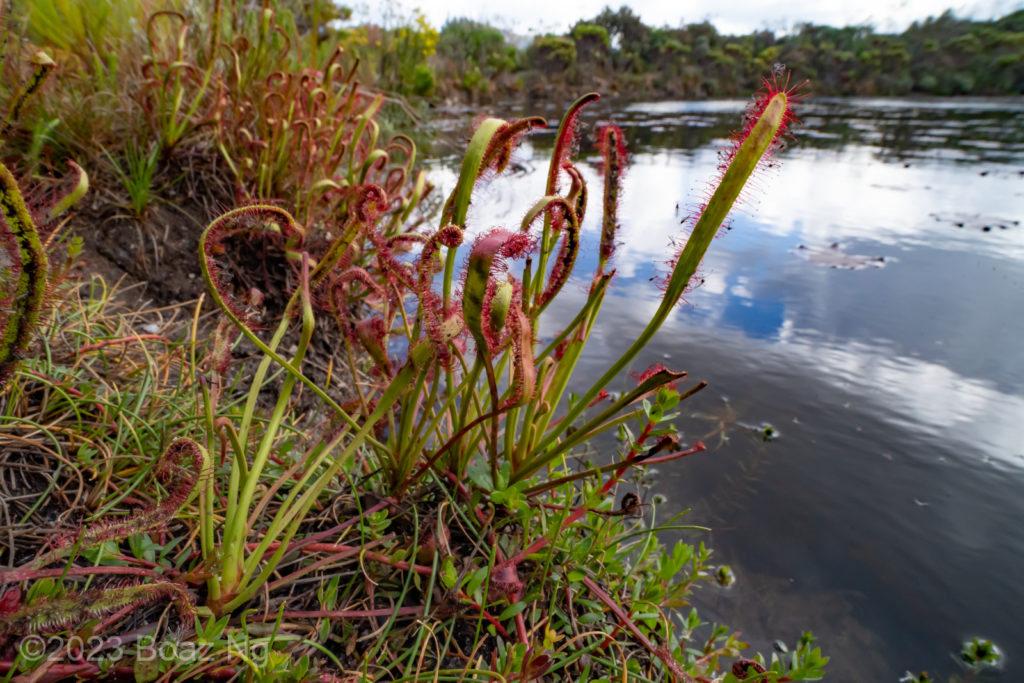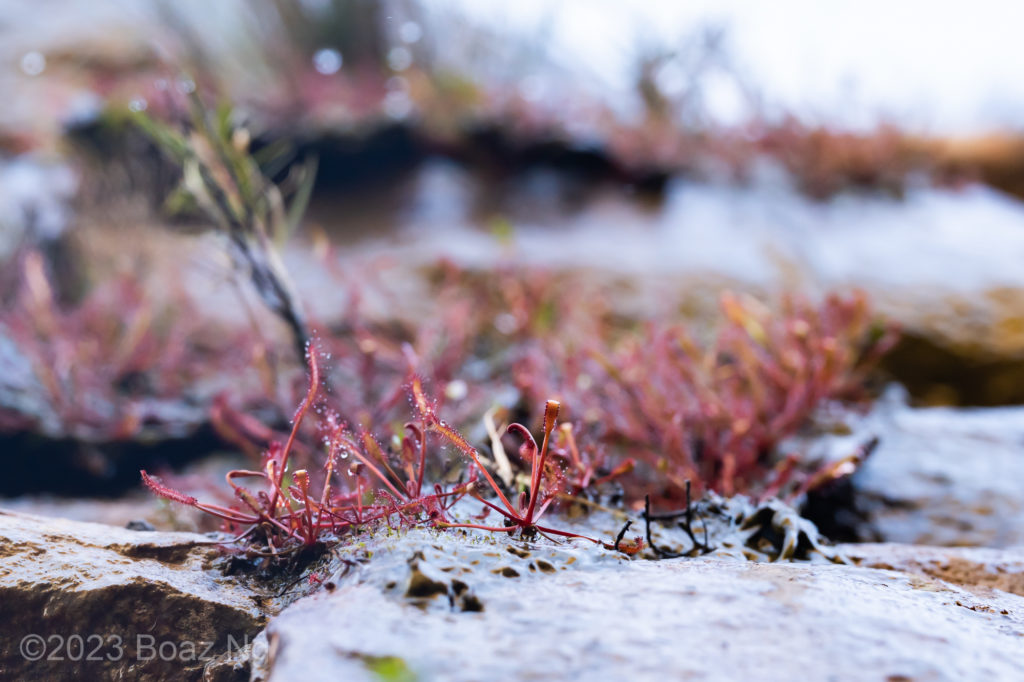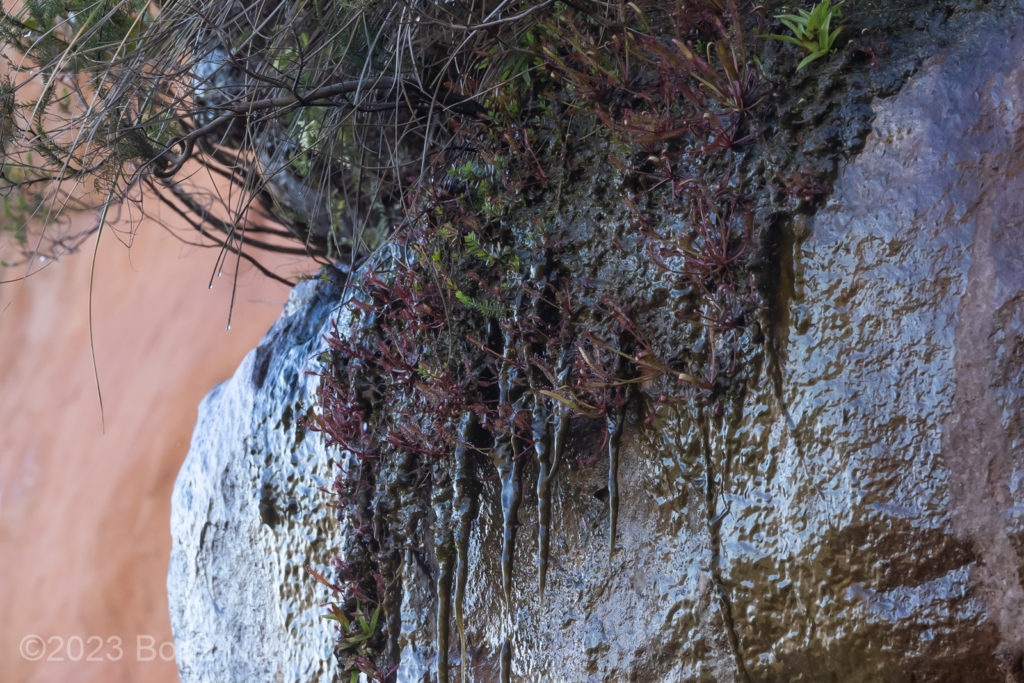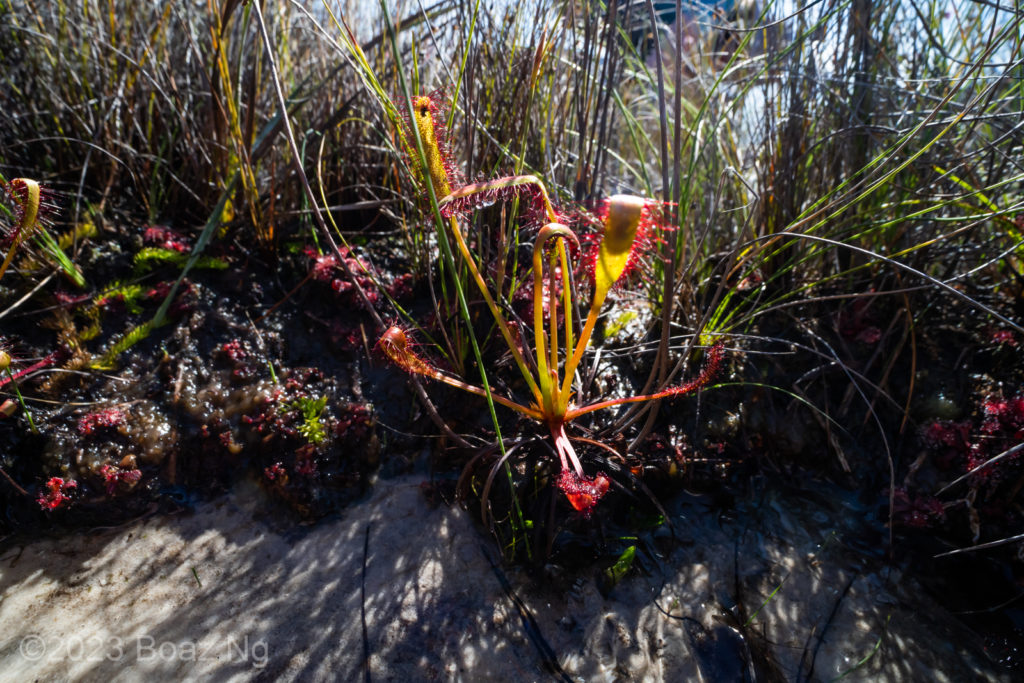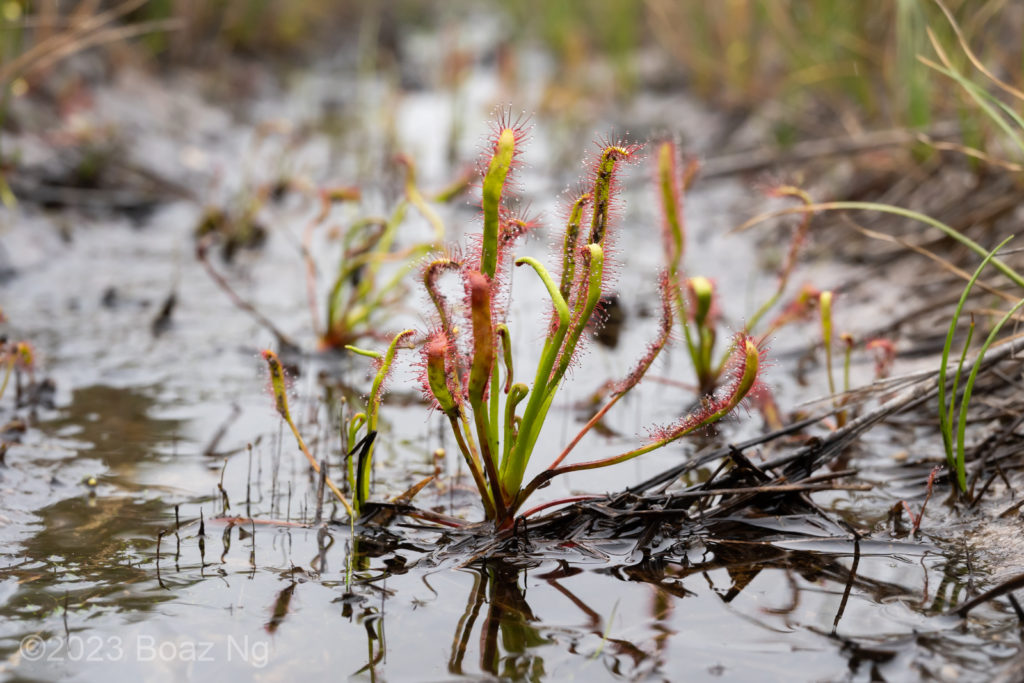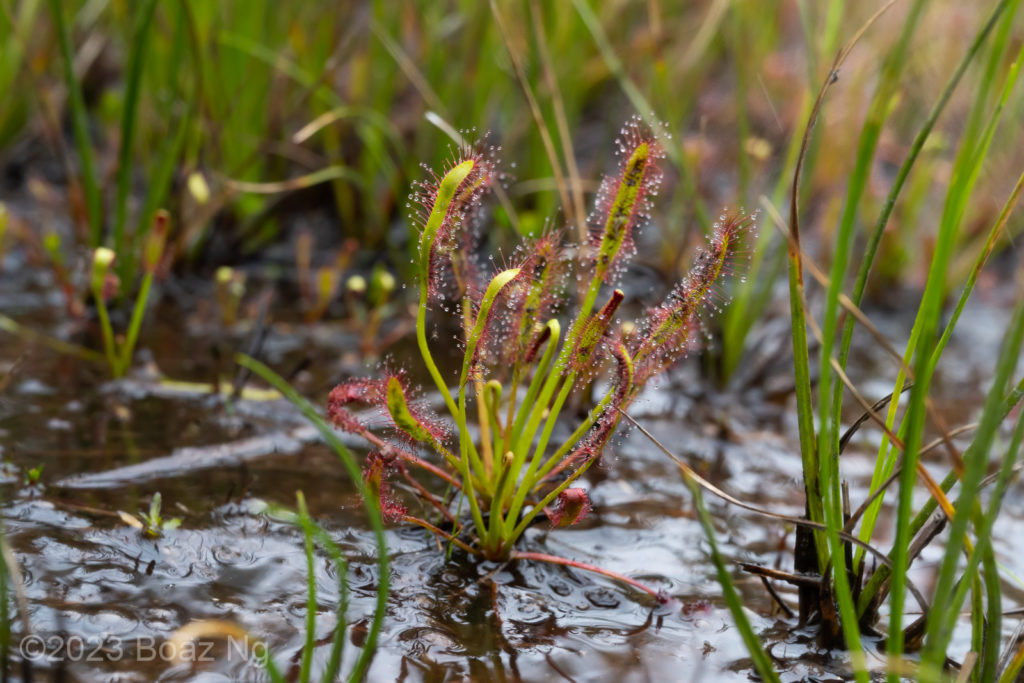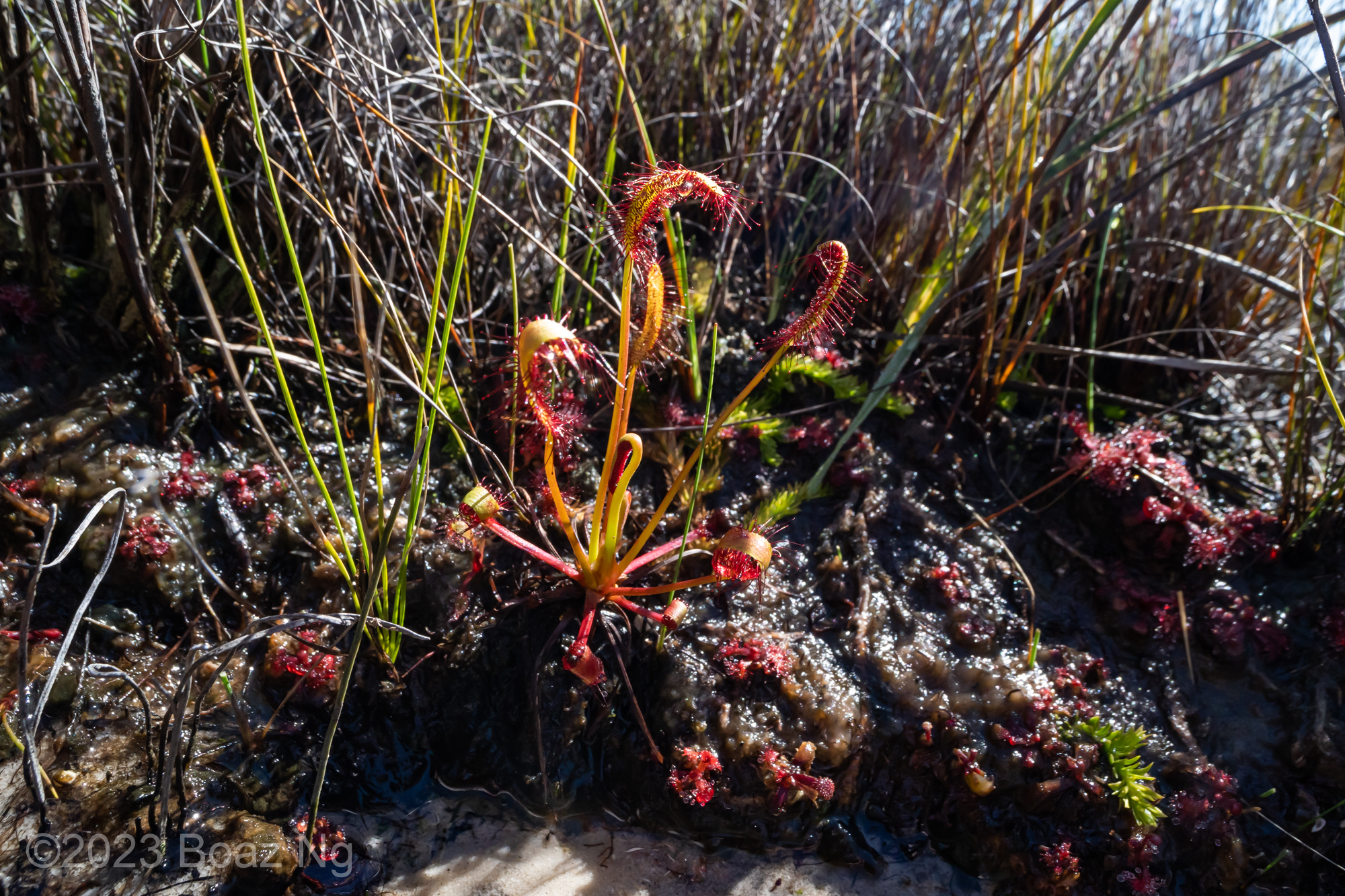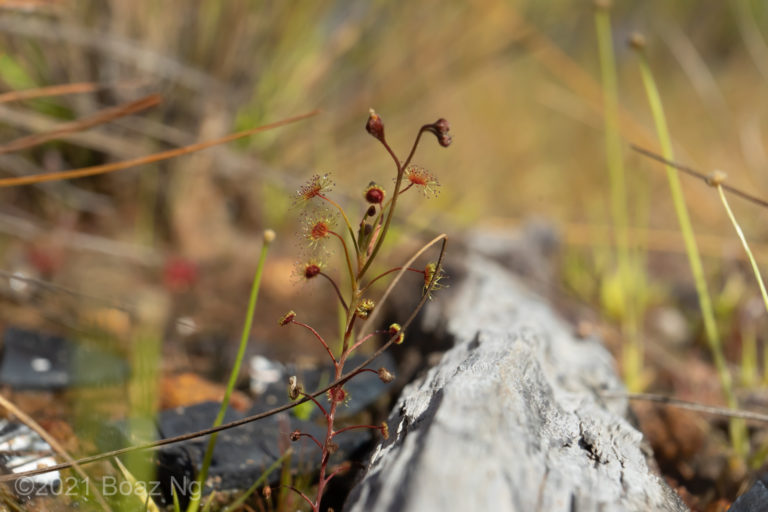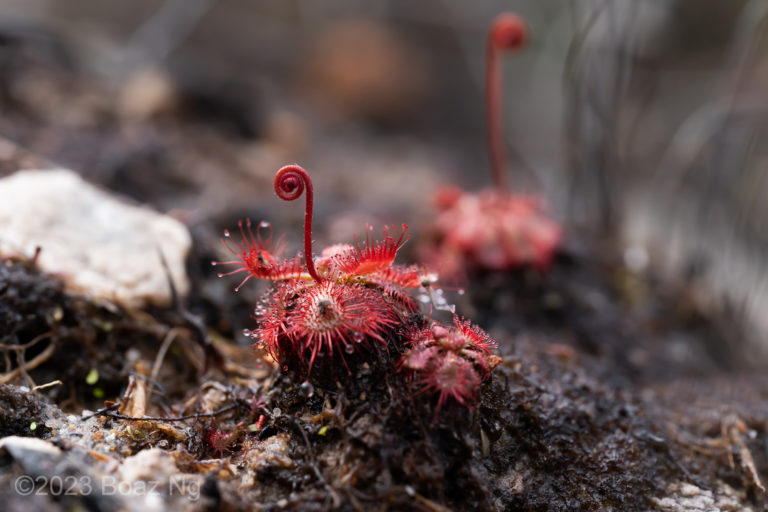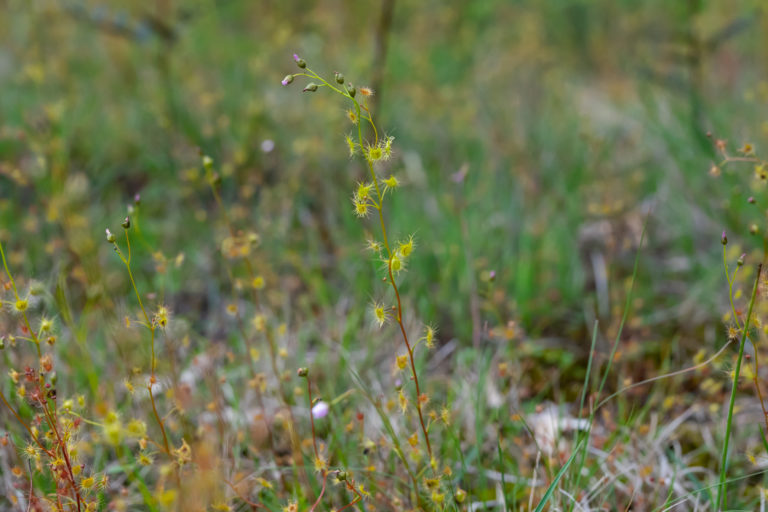Drosera capensis is a sundew that is endemic to South Africa. Despite its reputation as one of the weediest carnivorous plants in cultivation, the Cape Sundew is fairly restricted to certain permanently wet niches in the wild.
Drosera capensis forms an attractive raised rosette of long, strappy leaves. The laminae and petioles are usually a similar length and sometimes covered with sparse white hairs. The flower scape is gracile and has a dense covering of hairs. The flowers are pink. In the wild, plants usually grow to around 5-15cm in diameter, although plants in ideal conditions can get larger. The species is very variable in appearance, with different populations varying in size, leaf thickness, stemminess and hairiness.
In the wild, D. capensis is restricted to permanently wet niches such as seepages, small creeklines and reservoirs. Across its range, the summers are usually dry and hot so persistently wet environments are not too common. These habitats must also be well-drained enough such that the plants are not drowned or swept away in flood. The species is widespread but localised within the mountains of the Western Cape, in habitats that hold a buffer of water and slowly release it over the seasons.
Drosera capensis is superficially similar to other species with long, thin leaves. It is most similar to D. ramentacea but it grows in much wetter habitats, is less hairy and usually doesn’t form an extreme stem (D. ramentacea grows in well-drained slopes, is very hairy and has a propensity to grow a long stem). It is somewhat similar to D. hilaris but has much thinner leaves and an abrupt petiole-lamina transition (D. hilaris has thick leaves that gradually transition between the petiole and lamina).
